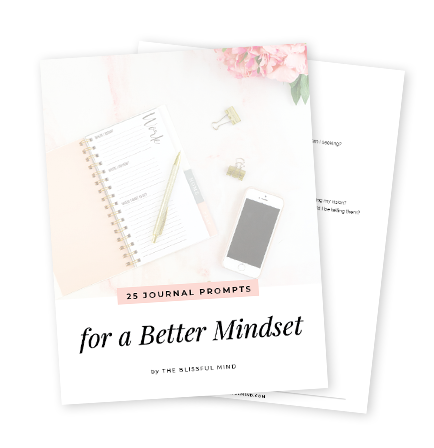Being a friend of your emotions is perhaps the most impactful departure you can make for mental health and emotional well-being, putting you in a collaborative rather than an adversarial relationship with your feelings. If you learn to listen to your emotions rather than to fight against them, you can change the way you relate to and experience life, make optimal decisions, and deal with ups and downs in ways you never thought possible.

In our Western culture, many people treat their emotions as enemies or foes to be suppressed, controlled, or gotten rid of instead of a helpful source of information. Research genuinely reveals that befriending your emotions instead of fighting with them decreases psychological distress, increases emotional intelligence, and enhances overall life satisfaction.
Emotions as Helpful Messengers
Emotions are a sophisticated internal communication network designed to deliver important information about your needs, values, and situation. Emotions are not random, inconvenient interruptions just to get rid of; they are messengers with valuable information about your relationship to yourself and your context.
Contemporary psychology recognizes that all of our emotions have an adaptive function rooted in evolutionary survival mechanisms: Fear alerts you to danger; anger signals you that your boundaries have been violated; sadness represents some sort of loss requiring processing; and joy identifies what matters to you.
Making friends with your emotions means developing a sense of curiosity about what feelings are trying to get you to hear, instead of labeling them as good or bad. This process changes your emotional life from an ongoing fight to a working partnership.
The Science of Emotional Acceptance
Neuroscience research demonstrates that trying to suppress an emotion is only going to make it stronger, and your attempts will consume cognitive resources. Multiple studies demonstrate that suppressing emotion increases visible physiological markers of stress, inhibits your memory, and can harm relationships by reducing or removing genuine expression.
Emotional regulation research shows that acceptance-based strategies work better than suppression strategies for long-term well-being. Neuroimaging studies show that when the brain accepts an emotion without judgment, it activates parts of the brain that engage emotional regulation.
Research shows that people who become friends with their emotions report lower anxiety and depression, increased resilience, and higher life satisfaction than people who normalize fighting their feelings.
The Negative Impact of Efforts to Avoid the Emotions
Trying to avoid or eliminate emotions creates multiple issues:
- Heightened emotional state – The more you resist, the stronger the emotions become • Mental energy depletion – Avoiding your emotions uses substantial mental energy that could be used for other tasks • Damaged relationships
- Suppressed emotions seep out as withdrawal or irritability • Missing emotional wisdom – When you fight emotions, you’re unaware of the important intelligence that emotions provide.
Fighting Emotions comes in Different Forms
Recognizing the common patterns of emotional resistance enables you to recognize when you’re avoiding a feeling rather than befriending one.
Suppression refers to pushing feelings down or acting like they’re not there, which works for a while, but it looks like pressure builds up that eventually explodes or manifests in some way, like physical symptoms.
Distraction refers to staying busy constantly, engaging in substance use, or consuming media to distract from feeling emotions. The occasional distraction is healthy, but chronic avoidance is an inability to experience emotions.
Self-criticism (i.e., you should not feel that way) punishes yourself or punishes you for having a feeling, judging the emotional response as weak. This means you are attacking yourself when you already have difficult emotions.
Intellectualization is to bypass feeling by trying to think about the feeling. While this can be helpful to understand feeling in a verbal way, it comes with a caveat: this replaces feeling with thinking and, at some point, simply stops feeling.
Indications You Are Avoiding Rather than Accepting Feelings
Familiarity with resistance demonstrates a tendency to adopt a more accepting style.
- Thoughts such as “I shouldn’t feel this way” are frequent
- Chronic tension in the jaw, shoulders, or stomach
- Difficulty identifying feelings or emotional numbness
- Experiencing an emotional episode after suppression

Practical Ideas for Accepting Your Emotions
Creating friendship with feelings requires some deliberate thoughts that slowly shift your relationship from adversarial to friendly.
Naming feelings asks you to identify and name the exact feeling you are experiencing. Studies show that as you name the feeling, you experience less intensity and more perceptions of control.
Curiosity approaches the feeling with no judgment and a real desire to know what the feeling is trying to convey. Ask the feeling, “What are you trying to tell me? What is the need or value represented?”
Body awareness training describes a practice that allows you to know where the feeling is physically located in your body before the feeling becomes an overwhelming feeling in your head by recognizing that feelings represent sensations. You may notice these feelings manifest as a tightness, warmth, heaviness, or other sensation where the feeling is located.
Welcoming a feeling is a conscious practice of inviting the feeling to your experience, rather than avoiding or resisting it. In your mind, when the difficult feeling may arrive, say to yourself, “I see you, I am with you.”
Compassionate self-talk is the self-talk that you speak to yourself with kindness around the time when you notice a difficult feeling. It may be best to think about this in terms of how you would comfort a friend through a difficult moment.
Everyday Practices for Emotional Friendliness
Including emotional acceptance into your day-to-day life turns typical frustrations into opportunities:
- Morning emotions check-in – Beginning each day by tuning into how you feel
- Journal about emotions – To write about your feelings without fear of censorship
- A short moment of pause, pausing to recognize emotion by taking a few moments.
- Review emotions with compassion- each night or at bedtime with tenderness.
Listen to Different Types of Emotions
The different emotional families have different information that comes clearer when you listen rather than fighting them.
Increased anxiety and fear are signals that indicate to you there is a threat or something unknown is occurring that may require more proactive energy. Rather than fight anxiety, listen or consider what the fear is about.
Increased anger and frustration are signs messages to tell you that a boundary has been crossed or that your goals are being thwarted. Rather than dismissing anger, listen to understand what needs are not being addressed. Frustration and anger can provide you with energy to make a change.
Increased sadness and grief are signals of loss that need to be acknowledged. Pause and listen to what you are grieving, rather than rushing past sadness.
Increased joy or excitement is a signal about what matters to you and what brings you alive. Rather than ignore or rush past positive, more pleasant emotions, listen to what joy can teach you.
Understanding Complex Emotions
Complex emotions, even if you have a basic understanding of the different emotional families, require an extra dose of careful listening:
- Shame – Usually expresses a sense of perceived disconnection, or has become a sign of internalized shame or criticism
- Guilt – Conveys behaviors in contrast with your values
- Envy – Points to unexpressed wants, or unmet needs
- Loneliness – Expresses a desire for connection and belonging
The Importance of Self-Compassion
Self-compassion provides the foundation for emotional health in your relationship with yourself – having the safety to experience difficult feelings without becoming emotionally overwhelmed.
Recognizing common humanity reminds you that being human includes experiencing difficult emotions. You are not uniquely defective in experiencing feelings of sadness, anxiety, or anger.
Mindful recognition is the experience of feeling the feelings without judgment and without suppressing the feelings. With balanced awareness, you will avoid both emotional suppression and merging emotionally overwhelmed identification.
Self-kindness offers care and comfort when experiencing difficult emotions rather than self-criticism and negativity. Talk to yourself as you would to a friend, or someone you care about.
The growth perspective offers a lens that sees emotional difficulties as learning opportunities. Each difficult emotion teaches us something about ourselves and what matters to us.

Developing Emotional Resilience
Emotional resilience is increased through befriending emotions, thereby paradoxically building your ability to handle difficult emotions:
• Decreased fear of emotions – By becoming familiar with the emotion, its presentation becomes less threatening • Faster recovery – Accepting the emotion allows it to process in a natural way • Greater confidence – You trust your ability to handle whatever emerges • Increased authenticity – You are living in alignment with what you truly feel
Emotional Friendship in a Relationship
Befriending your own emotions also increases your capacity for authentic connection in relationships with other people, as you increase your emotional awareness and capacity to not react automatically to those emotions.
Emotional transparency becomes less risky the more you befriend your emotions. When you’ve befriended your emotions, sharing them genuinely also deepens intimacy in the relationship without overwhelming the other person.
Your capacity for empathy also rises naturally as you are more accepting of your emotional experience. As you learn to understand your own feelings, you also create the capacity to understand what others feel.
Navigating conflict also gets easier when you actively listen to your emotions rather than automatically reacting. By listening and understanding, you are creating the needed space for a more conscious form of communication.
Learning to set boundaries also grows out of listening to your emotions when they signal that a boundary is needed. Feelings of anger or resentment are often a signal that boundaries need to be set.
Managing Intense Emotions
Even when accepting emotions as friends, their intensity may require using some specific ways to address them:
• Grounding techniques – using physical sensations to ground into the present moment • Breath work – regulating the breath to calm the nervous system • Temporary distraction – taking a short break, then returning to processing the emotions • Seeking support – reaching out to others, when feelings feel unmanageable
Emotional Friendship Provides Lasting Benefits
Once a friendship is developed with your emotions, individuals experience major improvements to their mental health and life satisfaction, and these improvements increase over time.
When you no longer have to expend energy fighting against your natural emotional responses, you experience decreased symptoms of anxiety and depression. Suffering occurs when we resist our emotions, not simply that we are feeling them.
Increased comfort in your emotional energy and landscape of emotion creates improvements to your emotional intelligence. This improved emotional intelligence can lead to better decision-making and improved relationships.
When you honor your feelings instead of suppressing them and denying what you feel, you create increased authenticity in your life. This authenticity creates greater satisfaction from your relationships and life experiences.
The suppression of feelings can create chronic stress in your system. With your friend, the emotion, you create less chronic stress in your body. This reduction in stress can lead to better health outcomes, such as improved immune responses, lower inflammatory responses, and each part of your body working together towards oneness.
Overall, you can create greater life satisfaction when you live in harmony with your emotional nature, instead of trying to fight against your emotional nature.
Establishing the Practice of Emotional Friendship
Building this new kind of relationship will mean implementing systematic practices that respond to both surface interactions and underlying patterns.
To assess your current relationship, take a moment to reflect honestly about how you typically respond to emotion. Notice if you fight over it, inhibit or control the feeling, or avoid it altogether.
Since your daily practice is a commitment, it has the potential to stay present and active. An emotional friendship can be something you keep as a priority rather than just remembering it during a crisis. Daily practice promotes new neural pathways.
Please be patient with the process. It is important to sit with yourself, as changing patterns you have practiced for a lifetime will take time. Try to be gentle with yourself when you are learning.
Engage with a professional therapist to have support for managing and processing complex emotional patterns you do not feel equipped to address on your own.
Conclusion: Peace Through Partnership
Creating a friendly relationship with your feelings is one of the most archetypal shifts in pursuit of mental health and lived authenticity that one can make. Listening to feelings versus fighting feelings transitions your internal experience from battling against yourself to a cooperative partnership with yourself.
Scientific inquiry supports that accepting emotions brings positive and positive benefits to levels of psychological health and life satisfaction. The secret is to interpret any emotion as valuable information, versus an enemy.
Renewing the friendship takes time and practice, but the peace and comfort of your friendship with feelings is worth the investment. Each time you listen and do not fight, you are furthering your friendship and partnership with yourself towards true wellness.






